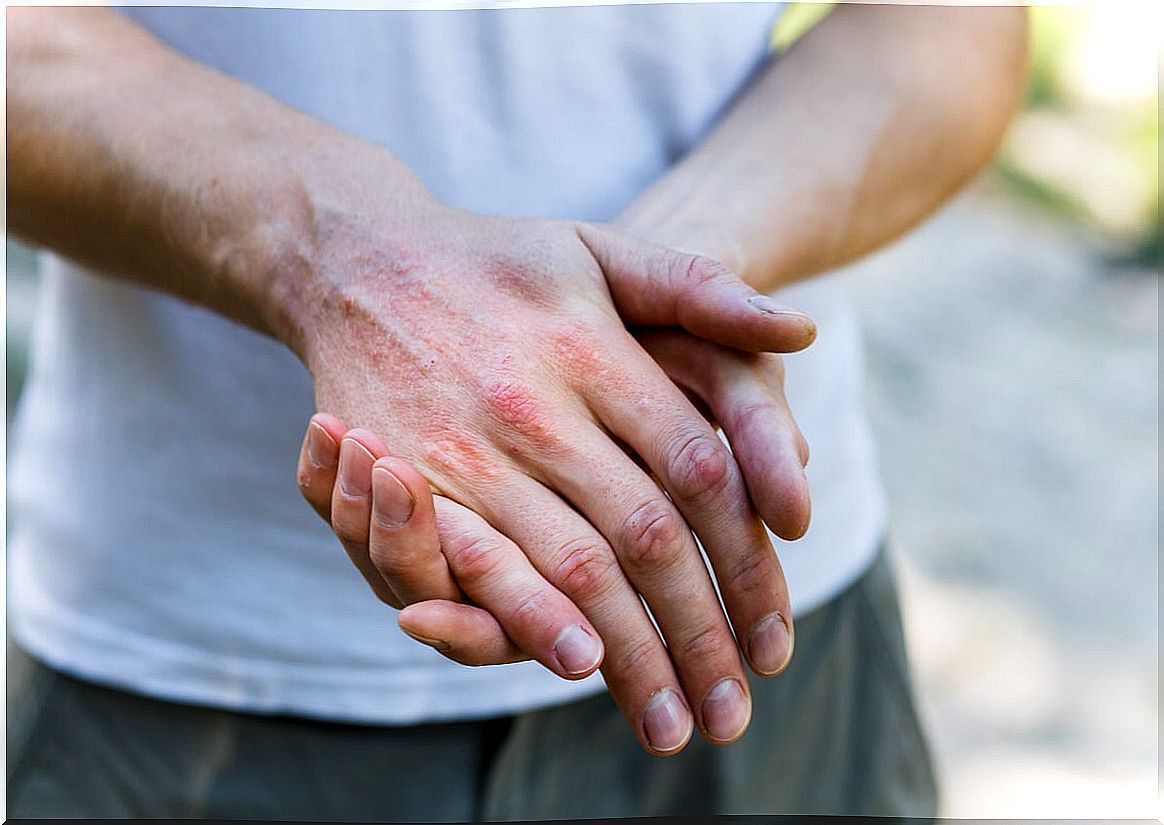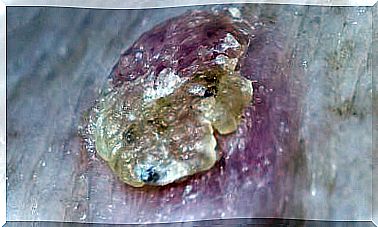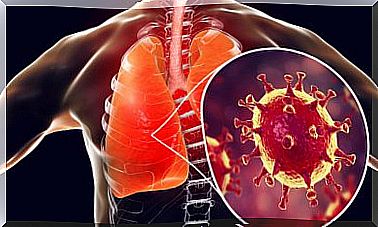Swimmer’s Itch: Causes, Symptoms And Treatment
Swimmer’s itch, cercarial or schitosomal dermatitis, is an allergic skin reaction to cercariae, which are the larvae of a waterfowl parasite (bird schistosomes).
It is a condition that has been little studied, but about which there is growing interest, since the World Health Organization (WHO) lists it as an emerging disease . There are case reports and outbreaks of swimmer’s itch in all parts of the world, including North and South America, Europe and Asia.
In an investigation carried out by Lashaki and collaborators, in which 41 studies carried out between 1937 and 2017 in different countries were reviewed, they determined that at least 34% of waterfowl worldwide are infected with schistosomes.
Main symptoms
As mentioned, swimmer’s itch is, in essence, an allergy. So there is an initial phase in which one comes into contact with the parasite and sensitization to it occurs.
In subsequent episodes, dermatitis itself will occur, due to the reaction of the immune system against something it recognizes, that is, cercaria.
As the name implies, the main symptom of swimmer’s itch is itching or itching. It ranges from tolerable to unbearable, to the point that it does not allow you to sleep.
Chronology of skin lesions
Swimmer’s itch produces a series of injuries that occur in characteristic times:
- Immediately after contact, itching, tingling, and burning may occur where the cercaria entered.
- Then, in this same place, a spot or macula of 1 to 2 millimeters in diameter appears that can persist for several hours.
- After 10 to 15 hours there is a skin rash with hives, small pimples, blisters and papules, three to five millimeters in diameter.
- Vesicles appear between the second and third day .
- One week after penetration, the papules disappear and a small red dot remains.
Scratching causes symptoms to increase. If you scratch, more histamine is released and the itchiness increases. In addition, the lesions can become infected by bacteria, making the situation worse.

Is it a serious illness?
The presence and intensity of swimmer’s itch symptoms depend on three factors:
- If it is the first contact with the cercaria or the person was previously exposed. The greater the exposure, the sensitization is significant and the symptoms will be more florid.
- The number of cercariae that came into contact.
- The genetic and immunological susceptibility of the person.
When there are many cercariae that have penetrated, there may be fever, swelling or inflammation of the joints, nausea and diarrhea. If the episode of dermatitis is very serious or is repeated continuously, it can become a chronic condition.
What Causes Swimmer’s Itch?
Cercariae are known as piques or duck lice . But in reality they are not lice, but larvae of different species of flatworms or flatworms, called schistosomes of birds .
The parasite develops in any aquatic environment in which certain species of snails are present that act as intermediate hosts. Birds are the ultimate hosts; most often, ducks, geese, and swans.
Macháček and colleagues reported the presence of cercariae in small artificial bodies of water at a university in Prague, Czech Republic. In other words, these parasites can be found in natural or artificial, rural or urban areas.
Mode of contagion
The larvae leave the snails in search of the birds’ legs, heading to the surface, responding to the sunlight. Humans are accidentally infected by coming into contact with water, but we are not the target of the cercaria.
The parasite is attracted to our body temperature, similar to that of birds. However, when it penetrates the human skin it ends up dying, generating a reaction that is what leads to swimmer’s itch.
The larvae release is greater in the morning hours, when the birds are usually in the water. Also, in warmer temperatures. For this reason, contagion outbreaks usually occur in spring and summer. It is not spread from human to human.
Who is at risk for swimmer’s itch?
Swimmer’s itch affects people who are exposed to cercaria for recreational or occupational reasons. It is described more frequently in children, since they bathe shallower, closer to the shore and for longer.
It is usual in rice growers and can appear after cleaning aquariums in which there are snails that have the parasite.
How can it be diagnosed?
Although swimmer’s itch tends to follow a characteristic pattern, meeting specific times for the appearance of injuries, the disease can go unnoticed.
On the other hand, it is easily confused with other entities, such as contact dermatitis, insect bites and skin infections caused by bacteria.
The appearance of lesions limited to areas of the body immersed in water and the history of having bathed in a lake or lagoon the previous 96 hours are usually the key data that make us think of a cercarial dermatitis or swimmer’s itch.
Are there laboratory tests for the diagnosis of swimmer’s itch?
There are no laboratory tests that are diagnostic of the disease. Alterations can occur in routine blood tests, such as those seen in other parasitic or allergic diseases, but they are not always present.
Also, they are not very useful if there is no medical suspicion and a clear history of exposure. Tests that detect the parasite in blood or other body fluid are also not available.

Available treatments
Treatment of swimmer’s itch focuses on relieving symptoms. Antiparasitic drugs are not indicated because, as explained, the parasite dies on contact with the dermis.
The measures that we must take into account when faced with cercarial dermatitis are the following:
- Avoid scratching, as the condition is aggravated and infection by bacteria is favored.
- Use cold compresses to relieve itching.
- If the allergic reaction is very strong or the itching is unbearable, it is advisable to see a doctor, who can prescribe allergy medications.
- Be very careful with applying creams, natural herbal products and oily substances without medical indication. Neither of these practices is recommended because they can increase dermatitis.
Swimmer’s Itch Prevention
To protect ourselves against contact with cercariae, it is recommended to avoid swimming in shallow coasts, with abundant vegetation and early in the morning. As described, it is these circumstances that facilitate exposure to the parasite.
Wearing appropriate swimsuits that leave the least amount of skin exposed is good practice, as is sunbathing after getting out of the water. If the symptoms are detected anyway, it will be advisable to carry out an immediate consultation.









